9 Cooking Mistakes That Could Turn Your Meal Into a Health Hazard
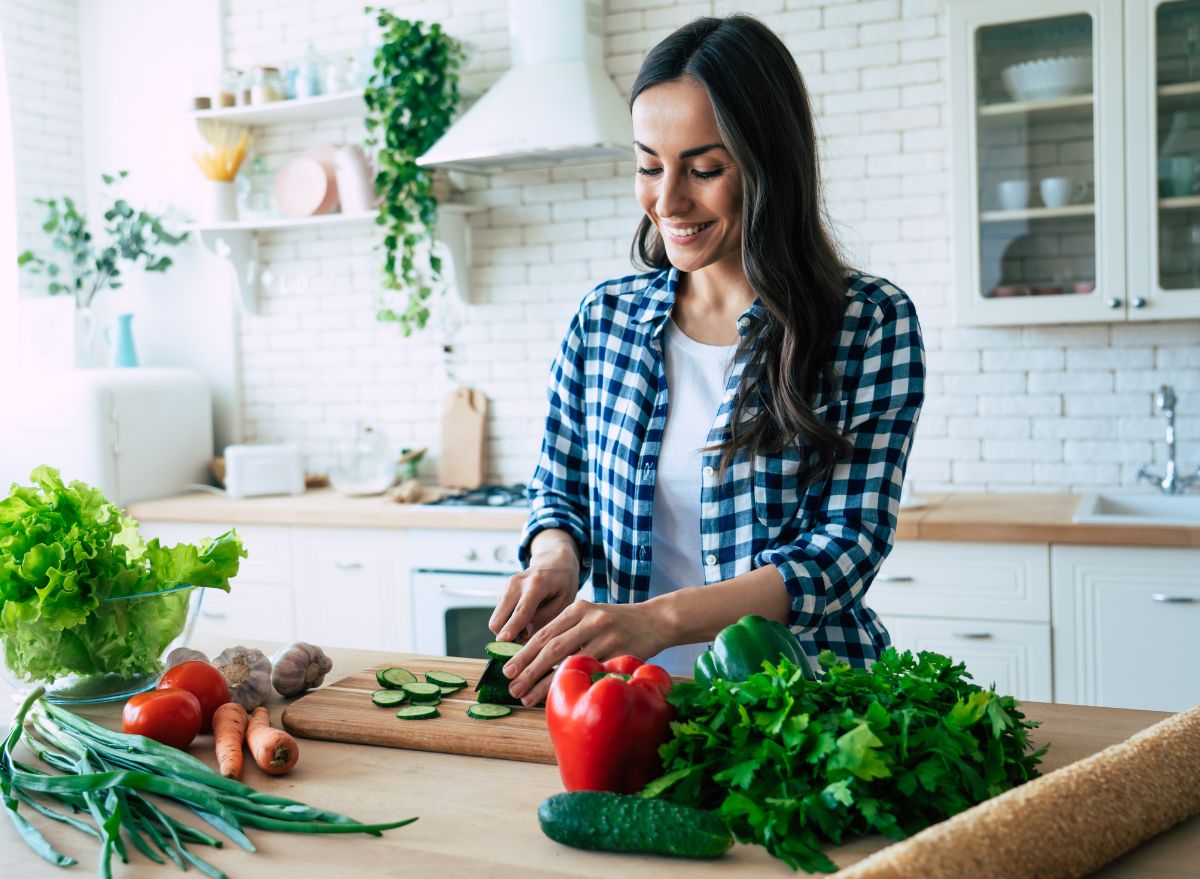
You've heard the saying if you want a truly healthy meal, make it yourself. But that's not always the case. While you have control over the quality of ingredients and how much seasoning you use when preparing food at home, you can fall prey to a major cooking faux pas that turns your nutritious dish into a toxic meal. No matter where you fall in the cooking spectrum, identifying common mistakes can help avoid unhealthy disasters that can ruin your food. Eat This, Not That! spoke with experts who share cooking errors to steer clear of to ensure your meal is healthy and clean.
Assuming Non-GMO Foods Are Better

Many people prefer to stay away from genetically modified foods, but non-GMOs aren't healthier, according to Michelin-trained Chef Julian Boudreaux, a private chef who does catering in Joshua Tree, California, and Los Angeles.
"Assuming that non-GMO foods are better can lead to an unhealthy meal," he says. "Non-GMO is laced with pesticides, additives, and preservatives. Non-GMO only means that there are no genetically modified ingredients in what you are going to eat. It does not mean it is healthy, so read the labels for the nutritional information."
Cooking With Fake Meats
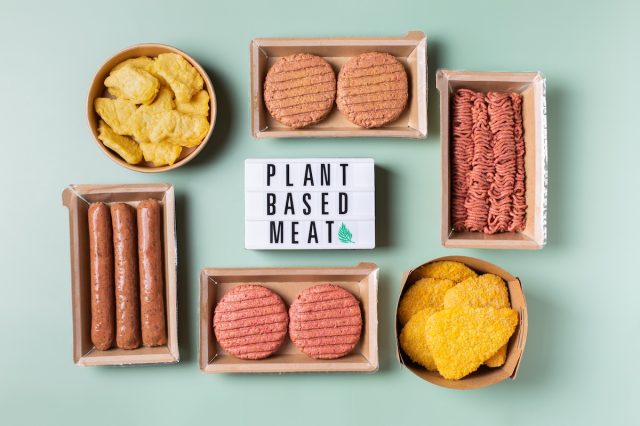
People who follow a plant-based diet often turn to meat alternatives, but Chef Joseph VanWagner of Echelon Kitchen & Bar in Ann Arbor, MI. warns to steer clear.
"The biggest cooking mistake for me would be replacing lean muscle, whole grain, or legumes with processed, pre-packaged faux proteins," He says. "A lot of these 'alternative' proteins are full of fats, grains, and hyper-processed foods that disrupt your gut microbiome, slow down your metabolism, and are actually higher in calories."
Overusing Oil or Butter
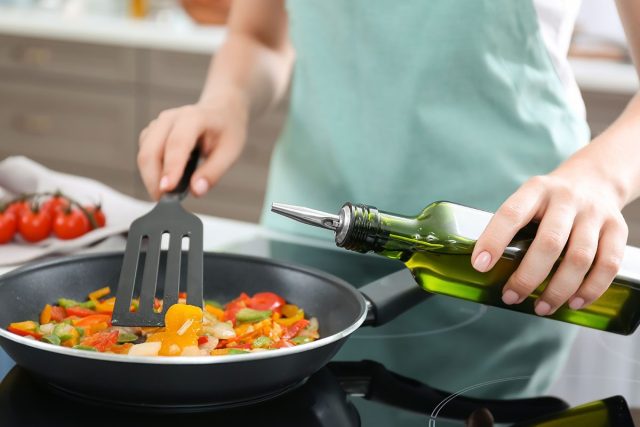
Butter and oil can boost flavor and help prevent sticking, but too much adds "calories and too many unhealthy fats," says. Mindy Roth, MS, RDN, CD, Owner of Mindy Roth Nutrition. "Measure the oil or butter you are using. You can also opt for better-for-you oil options like olive or avocado oil."
Anar Allidina, MPH, RD, a Registered Dietitian in Toronto specializing in prediabetes and insulin resistance, also emphasizes the importance of measuring.
"If you are eyeballing the amount of oil you are using in your cooking, it is very easy to add more, which can lead to higher calories and fat intake," she explains. "Yes, this applies to olive oil, too!"
Allidina says just, "One tablespoon of oil gives you about 120 calories and 14 grams of fat." She adds, "Taking in more fat than your body needs can lead to imbalanced fat intake, which might increase the risk of conditions like high cholesterol or cardiovascular issues over time."
To cut back on using oil, Allidina recommends the following tips:
- Use a silicone baking mat or parchment paper for roasting or baking.
- Try water or broth for sautéing. Instead of using oil for sautéing, you can use water or vegetable/chicken broth. This works well for cooking vegetables or stir fries without adding calories. For flavor, you can add a splash of balsamic vinegar or soy sauce.
- Use a spray bottle. Spray bottles allow you to control how much oil you're using. They provide the same healthy benefits but with fewer calories per serving (about 5–10 calories per spray). A good option for lightly coating pans or adding a thin layer to roasted veggies.
- Use healthier cooking methods. Grilling and baking foods use less oil compared to frying. You can grill veggies, lean meats, and even fish, using a light brush of oil or spray. Air frying is another great option for reducing oil since you can lightly brush or spray the oil on your foods.
Using Nonstick Pans with Teflon
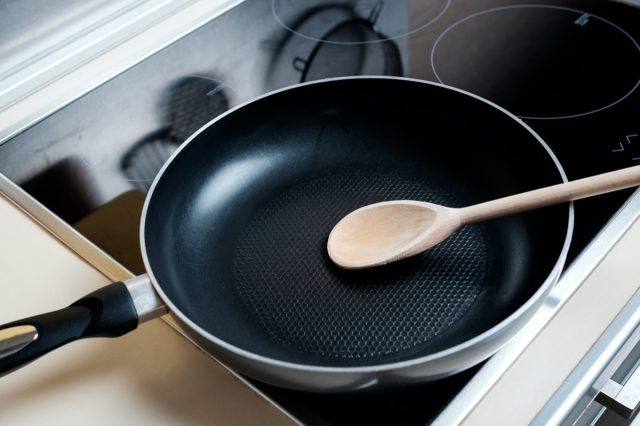
Nonstick pans are a convenient way to cool and clean, but Jamie Johnson, RDN, Registered Dietitian Nutritionist at Ingraining Nutrition, says they're unhealthy.
"Nonstick pans that use Teflon can actually cause you to ingest chemicals known as PFAS when heated at a high temperature for a long period or when the coating gets scratched," she says. "PFAS are known as forever chemicals because they do not break down and they may potentially be associated with numerous health issues, including hormone disruption, fetal neurodevelopment, cancer and cardiovascular disease. Safer alternatives to nonstick cookware are pots and pans that are cast iron, ceramic coated, or stainless steel."
Using Low-Quality Ingredients
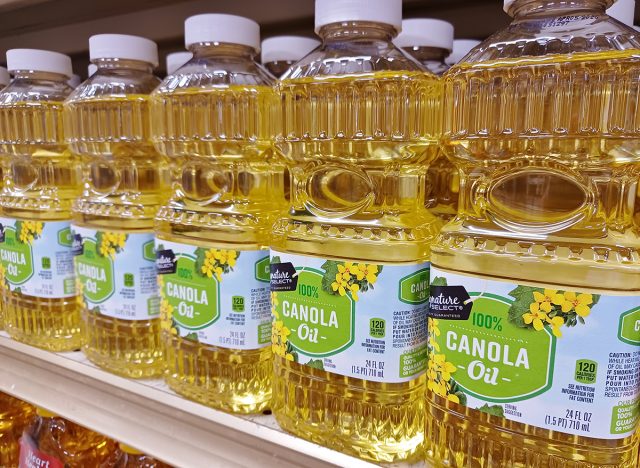
Cooking from home gives you the freedom to use top-notch ingredients to make your dish healthy, so Chef Joseph suggests skipping anything that isn't high-quality.
"Using low-quality fats and highly processed seed oils to saute, roast, make vinaigrettes, etc is a common cooking mistake," he says. "They lack any fat-soluble vitamins and give almost no flavor or texture. Instead, I'd use olive oil, high-quality butter, rendered animal fats, avocado oil, and coconut oil where applicable. With all fats, moderation is key."
Not Properly Cleaning Cast Iron Cookware
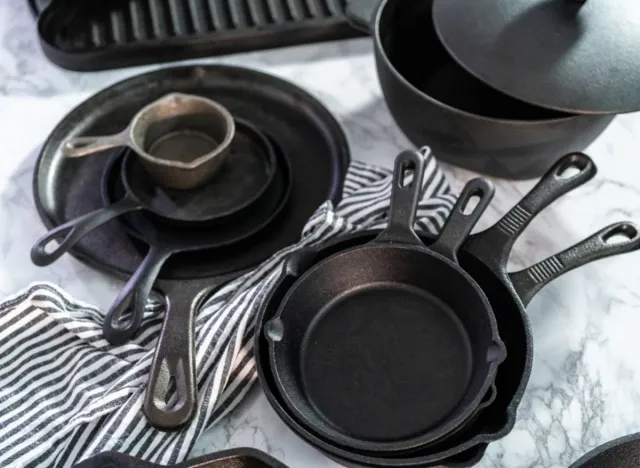
Cooking with cast iron has benefits, such as high heat retention, which allows for excellent searing and browning. Plus, it's long-lasting, but unless it's cleaned properly and well-maintained, cast iron is unhealthy, says Chef Julian.
"To get the full advantages of cast iron, it must be thoroughly washed and cleaned. To dry, place it over a hot burner for a couple of minutes and then lightly coat it with oil, which is called seasoning the cast iron."
Misinterpretation of Healthy Food Labels
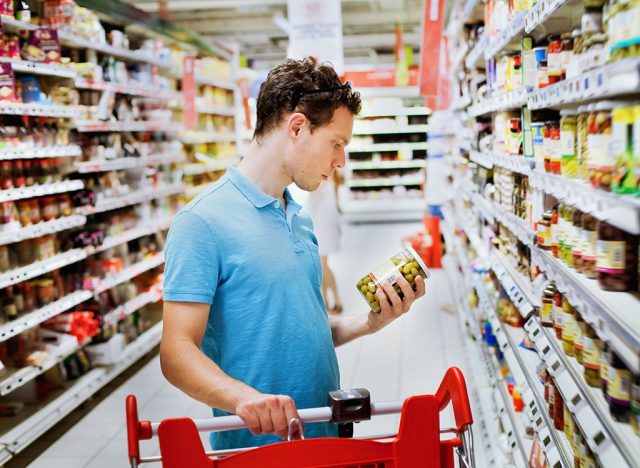
Not all food labels are what they seem. Many can be misleading, according to Chef Julian.
"A lot of food labels advertise as vegetarian, vegan, keto, GMO-free and even sometimes say organic even though there might be just one organic ingredient in the list and is not certified USDA organic," he says. "These misleading labels can lead to eating heavily processed foods because they play a mental game on you and trick you into thinking just because it goes by the guidelines of a strict diet label that it is healthy when it is not."
He adds," It is an abuse and misuse of what a healthy lifestyle is meant to be."
Overcooking Vegetables
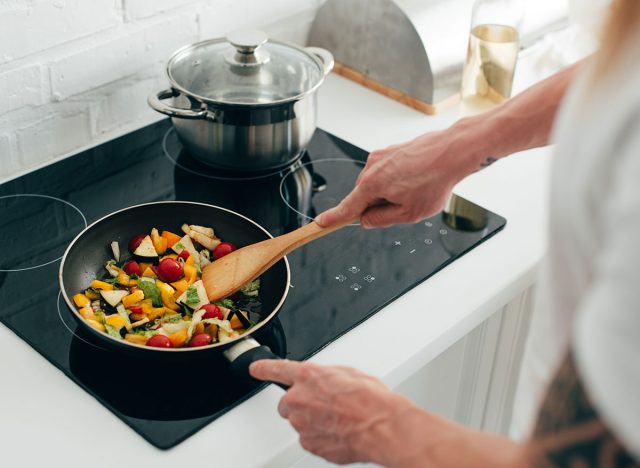
Eating a rainbow of vegetables is a good way to get the needed vitamins and nutrients our body craves, but Roth says overcooking them is a mistake to avoid.
"While it doesn't make them "unhealthy," overcooking vegetables does decrease their vitamin and mineral content," she explains. "Make sure that the vegetable keeps its vibrant color. If they start to get dark, then they are likely over-cooking."
Adding Too Much Salt

It's easy to over-consume salt–it's in everything and if you're not paying attention to how much you're adding to your food, you can go over the daily amount recommended in just one meal.
The American Heart Association says too many Americans consume more salt than recommended. The organization suggests having no more than 2,300 milligrams a day, but many people have 3,500mg daily.
Roth says, "In the general Americanized diet, we often already eat enough salt in a day. Adding too much salt can increase the risk of high blood pressure and other health conditions."
Allidina agrees that too much salt can damage your health and explains that excess sodium can "lead to bloating and fluid retention and put stress on our kidneys to filter the salt.
She adds, "Plus, too much salt in our food and diet can make us dehydrated since salt draws water from cells. When we're dehydrated, it affects the function of our organs and can cause fatigue, headaches, and poor digestion."
The good news is when we cook we are in complete control with how much salt we add. To enhance your dishes while keeping your salt intake in check, Allidina gives the following tips:
- Use herbs & spices: Fresh or dried herbs basil, thyme, rosemary, cilantro) and spices (cumin, turmeric, garlic powder, paprika) can add rich flavors without the need for too much salt.
- Try acidic ingredients: A splash of lemon juice, vinegar, or tamarind can enhance flavors and reduce the need for additional salt.
- Add aromatics: Aromatics like onions, garlic, leeks, and shallots add depth and richness to your dishes, enhancing the overall flavor profile without needing salt. Try caramelizing onions or roasting garlic for even more flavor.
- Read nutrition labels: Swap out regular soy sauce for low-sodium soy sauce, tamari, or other low-salt options like coconut aminos or liquid aminos for stir-fries and sauces. Comparing different brands, it's quite surprising to learn how the sodium levels can vary.
- Try salt-free or low-sodium broths. Use low-sodium or salt-free vegetable or chicken broth when making soups, stews, risotto, or gravies. If you're cooking grains ( quinoa, rice, or couscous), cook them in broth for extra flavor.
- Slowly reduce salt: Gradually reduce the amount of salt you use, allowing your taste buds to adjust and helping you enjoy more natural flavors over time.









